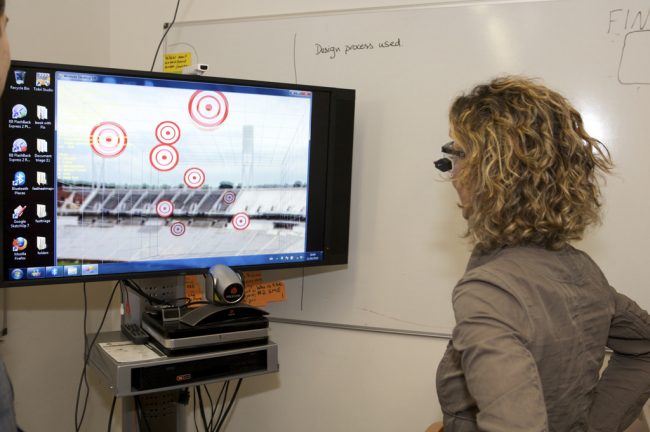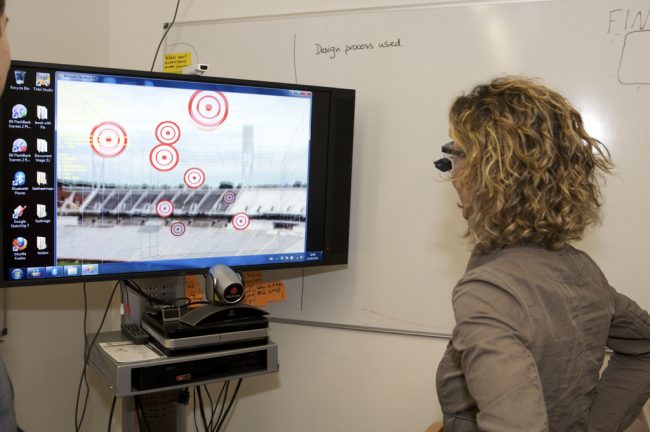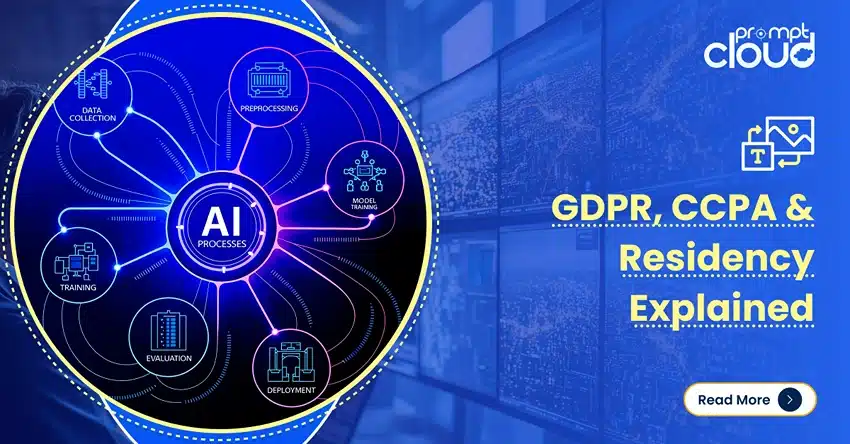
Did you know that 90% of the data present in the world today was created in the last two years alone!” This statement outlines the immense speed at which big data is being accumulated, generated, processed, analysed, and visualised. Multiple businesses have been able to utilise the value potential of big data to make sure that they remain sustainable, expand their business margins, and give momentum to their long-term operational strategy. For instance, McKinsey notes that retailers who leverage the full power of big data are able to improve their operational margins by as much as 60%.
It’s not only that big data volumes are big; even the potential of the impact that can be created by applying big data and advanced analytics is big. However, the ground reality shows another story. The level of impact that was predicted has failed to materialise. Granted, there are a handful of examples like Google and Amazon that are using big data analytics and visualisation to great effect. Many haven’t been able to reap the expected rewards by embracing big data analytics at scale across the organisation.
Did you know that 90% of the data present in the world today was created in the last two years alone!” This statement outlines the immense speed at which big data is being accumulated, generated, processed, analysed, and visualised. Multiple businesses have been able to utilise the value potential of big data to make sure that they remain sustainable, expand their business margins, and give momentum to their long-term operational strategy. For instance, McKinsey notes that retailers who leverage the full power of big data are able to improve their operational margins by as much as 60%.
It’s not only that big data volumes are big; even the potential of the impact that can be created by applying big data and advanced analytics is big. However, the ground reality shows another story. The level of impact that was predicted has failed to materialise. Granted, there are a handful of examples like Google and Amazon that are using big data analytics and visualisation to great effect. Many haven’t been able to reap the expected rewards by embracing big data analytics at scale across the organisation.
We see many reasons that come across as challenges in implementing big data analytics in a better way. These include –
Tools are hard to master – The entire suite of tools and IT resources including ETL and Hadoop have proven that tools can be used to extract better value from the big data collected from diverse sources. However, it is equally true that these tools are hard to master. Since the technology is fairly recent, many data scientists and analysts aren’t able to use it to manage and analyze the massive volume of structured and unstructured data generated from big data.
Scalability – While big data projects are known to quickly grow exponentially, companies find it hard to scale up resources and human capital accordingly. As a result, the management has to constantly pause and upgrade their project strategies to meet the growing big data volume and veracity. Additionally, in the absence of a cloud strategy, it becomes costly to align hardware assets and infrastructure at a moment’s notice to cater to the growing big data.
Actionable insights – It is difficult to directly correlate higher volume of big data with better insights. The primary issue is the lack of cohesiveness amongst stakeholders and data scientists. The inappropriate or incomplete communication of business objectives to the web scraping, data analytics, and data science team means that the data sources to collect data, its analysis, and visualisation will differ from the outcomes expected by the management.
Out of these issues, today we will look at one specific challenge – insight generation and see how we can address this issue satisfactorily.
Remember the opening statement of this article? The importance of this statement means that the means to analyze these voluminous big data figures is still not ready. Even we as human beings are not ready or designed to process such huge numbers and make sense of it for better insight generation. This means that alternative fields need to be brought into the picture to help us make sense of the 2.5 quintillion bytes of data being generated every single day.
The visualization and interpretation of big data analytics help the technique to be more relevant in front of the stakeholders and management. Various tools of data interpretation and visualization help make big data analytics meaningful.
This is precisely where Augmented Reality comes into the picture.[spacer height=”10px”]
Introducing Augmented Reality
Augmented Reality (AR) helps overcome the problems of limited human perception and limitations from dimensions and screen sizes. AR helps describe the data produced by computers that are super-imposed in the real world. With a unique blend of filtering visualization approaches, motion recognition, and dynamic projection, AR can provide a multi-dimensional representation of data visualization thus helping to uncover slices of data hidden in plain view, for better insight generation. In the big data visualization world, data scientists often find it difficult to overcome the issue of scaling – i.e. the need to expand to another branch of information from a specific point of presented data. This problem is solved effectively by Augmented Reality.
Challenges and solutions of Augmented Reality in big data visualization
Tracking and identification – The constant calibration and re-calibration is the key driver to the success in blending Augmented Reality with big data analytics and visualization. Since tracking is dynamic and changes every nano-second, proper infrastructure must be in place to monitor and identify the coordinates. Tracking the position and angle values of virtual objects within the 3D canvas and dynamically re-estimating it during the presentation is key to enhanced user engagement and better conveying of the idea behind big data analytics through Augmented Reality.
Perception – While computational prowess of modern day systems is high, thanks to advanced technologies like machine learning and artificial neural networks, the fact remains that it still lags behind the perceptive and cognitive capabilities of the human brain. This disconnect between technology and human brainpower too is a challenge in the effective union of big data visualisation and augmented reality. The human perception has its own set of peculiarities and features. It becomes difficult to mimic these features through interface and hardware integration. Also, how the audience will react to a certain movement and change of visual aspect too needs to be taken into account. A great workaround to this challenge will be to ensure simplicity in the visualisation of information. This prevents the AR- enabled presentation to turn to a mind-numbing activity or incorrect perception or reaction to the visualised data presented by augmented reality. Technology developers can look at psycho-physical analysis to understand the cognitive and perceptive function of human brain better.
Integrating the two technologies – Augmented Reality is equipped with some cool functionalities like motion through 3D spaces, data slicing beyond the field of vision, and scaling. In big data, these functionalities can be applied with great success to generate insights that drive decision making. Another step further can be implementing voice and gestures to provide a better user experience to your audience during the storytelling phase of big data visualization. Applying machine learning algorithms to define basic gestures would work well to improve the overall efficacy of big data visualization with the help of Augmented Reality.
Hardware interface – The hardware integration with big data visualization needs a certain level of skills and learning. With his advanced skillset, data scientists can overcome typical challenges like limited field vision, distortion of scene’s resolution, time delay, and most importantly, cost factor. A sound resolution will be to devise a framework that allows for seamless interaction with the 3D model with intuitive gestures or voice. Many systems are already in place – like Head Mounted Displays and real-time hand tracking to act as a secondary user input device. While hand tracking to manipulate virtual objects do not offer tactile responses, this difficulty needs to be overcome with better technology so that the efficacy of big data visualization improves substantially.
Disparity between real and virtual objects – The beauty of augmented reality is that it manages to seamlessly blend the real world with virtual objects and scenes. Executing this beauty is one of the biggest challenges of using augmented reality to drive big data visualization. A disparity between the real objects and virtual objects leads to multiple problems – vision distortion, bad focus, incorrect response to a data visualization scene, or brightness and contrast problems. A counter measure would be to use advanced equipment with latest optical technologies that render brightness, saturation, and contrast in its true form.
Comfort factor – The close proximity of display to the user’s eye is a big challenge in the comfortable viewing of big data visualization in action using augmented reality. The current technology is geared to render the augmented reality scenes on a screen. A suitable workaround will be to enhance the display resolution and eliminate pixel problems like grainy images.
Skill enhancement – The bringing together of diverse fields of augmented reality and big data visualization will be successful only with increased application of this blend and this can happen only when more and more people embrace this approach. By training talent to identify this new technology and interacting productively, skill enhancement around this new discipline will improve substantially.
To conclude
Augmented Reality has touched upon various business sectors, and Big Data remains no exception to this trend. We see the impact of Big Data being amplified many times over thanks to the visually stunning and easily comprehensible value proposition of Augmented Reality. What is limited by human perception and vision, is enhanced substantially with the rich visual elements presented by Augmented Reality. This makes Augmented Reality a vital accessory to influence the reach and impact of Big Data.
We see many reasons that come across as challenges in implementing big data analytics in a better way. These include –
Tools are hard to master – The entire suite of tools and IT resources including ETL and Hadoop have proven that tools can be used to extract better value from the big data collected from diverse sources. However, it is equally true that these tools are hard to master. Since the technology is fairly recent, many data scientists and analysts aren’t able to use it to manage and analyze the massive volume of structured and unstructured data generated from big data.
Scalability – While big data projects are known to quickly grow exponentially, companies find it hard to scale up resources and human capital accordingly. As a result, the management has to constantly pause and upgrade their project strategies to meet the growing big data volume and veracity. Additionally, in the absence of a cloud strategy, it becomes costly to align hardware assets and infrastructure at a moment’s notice to cater to the growing big data.
Actionable insights – It is difficult to directly correlate higher volume of big data with better insights. The primary issue is the lack of cohesiveness amongst stakeholders and data scientists. The inappropriate or incomplete communication of business objectives to the web scraping, data analytics, and data science team means that the data sources to collect data, its analysis, and visualisation will differ from the outcomes expected by the management.
Out of these issues, today we will look at one specific challenge – insight generation and see how we can address this issue satisfactorily.
Remember the opening statement of this article? The importance of this statement means that the means to analyze these voluminous big data figures is still not ready. Even we as human beings are not ready or designed to process such huge numbers and make sense of it for better insight generation. This means that alternative fields need to be brought into the picture to help us make sense of the 2.5 quintillion bytes of data being generated every single day.
The visualization and interpretation of big data analytics help the technique to be more relevant in front of the stakeholders and management. Various tools of data interpretation and visualization help make big data analytics meaningful.
This is precisely where Augmented Reality comes into the picture.[spacer height=”10px”]
Introducing Augmented Reality
Augmented Reality (AR) helps overcome the problems of limited human perception and limitations from dimensions and screen sizes. AR helps describe the data produced by computers that are super-imposed in the real world. With a unique blend of filtering visualization approaches, motion recognition, and dynamic projection, AR can provide a multi-dimensional representation of data visualization thus helping to uncover slices of data hidden in plain view, for better insight generation. In the big data visualization world, data scientists often find it difficult to overcome the issue of scaling – i.e. the need to expand to another branch of information from a specific point of presented data. This problem is solved effectively by Augmented Reality.
Challenges and solutions of Augmented Reality in big data visualization
Tracking and identification –
The constant calibration and re-calibration is the key driver to the success in blending Augmented Reality with big data analytics and visualization. Since tracking is dynamic and changes every nano-second, proper infrastructure must be in place to monitor and identify the coordinates. Tracking the position and angle values of virtual objects within the 3D canvas and dynamically re-estimating it during the presentation is key to enhanced user engagement and better conveying of the idea behind big data analytics through Augmented Reality.
Perception –
While computational prowess of modern day systems is high, thanks to advanced technologies like machine learning and artificial neural networks, the fact remains that it still lags behind the perceptive and cognitive capabilities of the human brain. This disconnect between technology and human brainpower too is a challenge in the effective union of big data visualisation and augmented reality. The human perception has its own set of peculiarities and features. It becomes difficult to mimic these features through interface and hardware integration. Also, how the audience will react to a certain movement and change of visual aspect too needs to be taken into account. A great workaround to this challenge will be to ensure simplicity in the visualisation of information. This prevents the AR- enabled presentation to turn to a mind-numbing activity or incorrect perception or reaction to the visualised data presented by augmented reality. Technology developers can look at psycho-physical analysis to understand the cognitive and perceptive function of human brain better.
Integrating the two technologies –
Augmented Reality is equipped with some cool functionalities like motion through 3D spaces, data slicing beyond the field of vision, and scaling. In big data, these functionalities can be applied with great success to generate insights that drive decision making. Another step further can be implementing voice and gestures to provide a better user experience to your audience during the storytelling phase of big data visualization. Applying machine learning algorithms to define basic gestures would work well to improve the overall efficacy of big data visualization with the help of Augmented Reality.
Hardware interface –
The hardware integration with big data visualization needs a certain level of skills and learning. With his advanced skillset, data scientists can overcome typical challenges like limited field vision, distortion of scene’s resolution, time delay, and most importantly, cost factor. A sound resolution will be to devise a framework that allows for seamless interaction with the 3D model with intuitive gestures or voice. Many systems are already in place – like Head Mounted Displays and real-time hand tracking to act as a secondary user input device. While hand tracking to manipulate virtual objects do not offer tactile responses, this difficulty needs to be overcome with better technology so that the efficacy of big data visualization improves substantially.
Disparity between real and virtual objects –
The beauty of augmented reality is that it manages to seamlessly blend the real world with virtual objects and scenes. Executing this beauty is one of the biggest challenges of using augmented reality to drive big data visualization. A disparity between the real objects and virtual objects leads to multiple problems – vision distortion, bad focus, incorrect response to a data visualization scene, or brightness and contrast problems. A counter measure would be to use advanced equipment with latest optical technologies that render brightness, saturation, and contrast in its true form.
Comfort factor –
The close proximity of display to the user’s eye is a big challenge in the comfortable viewing of big data visualization in action using augmented reality. The current technology is geared to render the augmented reality scenes on a screen. A suitable workaround will be to enhance the display resolution and eliminate pixel problems like grainy images.
Skill enhancement –
The bringing together of diverse fields of augmented reality and big data visualization will be successful only with increased application of this blend and this can happen only when more and more people embrace this approach. By training talent to identify this new technology and interacting productively, skill enhancement around this new discipline will improve substantially.
To conclude
Augmented Reality has touched upon various business sectors, and Big Data remains no exception to this trend. We see the impact of Big Data being amplified many times over thanks to the visually stunning and easily comprehensible value proposition of Augmented Reality. What is limited by human perception and vision, is enhanced substantially with the rich visual elements presented by Augmented Reality. This makes Augmented Reality a vital accessory to influence the reach and impact of Big Data.




















